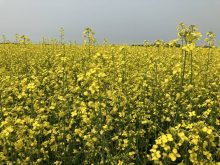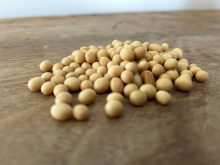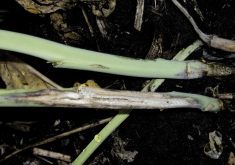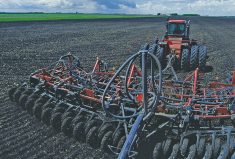Growers with extreme clubroot infestation are being told that the best option might not be to just stop growing canola for a while, but all annual crops in parts of a field.
Seeding patches of heavily infested ground to grass or forages is now on the list of clubroot management practices recommended by the Canola Council of Canada.
But agronomy specialist Dan Orchard is quick to point out his organization isn’t recommending putting an entire field into grass.
“If patches are small enough and can be isolated, or it’s a patch somewhere that you find early, I think it would be a great opportunity to have it as a grass or forage,” he said.
Read Also

Hail research hopes to benefit potato growers
Alberta research scientist measures hail storm and heat dome affects on potato crops
“The sooner you find it, the sooner you recognize it, the easier it would be to take it out of production if it’s only an acre or two. It shouldn’t really affect the bottom line of the farm too much.”
- Read more: It’s been perfect conditions for clubroot
In addition to reducing the risk of spreading the spores that cause clubroot, a grassed area gives producers a spot where they can clean soil off equipment before heading to the next field.
By taking the area out of crop production and planting forages, growers can reduce resting spores or inoculum in their fields, said Stephen Strelkov, professor of plant pathology at the University of Alberta.
“Such a strategy might be valuable, and could contain some of these new strains that are starting to emerge in a few patches in a few fields,” he said.
But the best approach is to lengthen canola rotations so that kind of extreme measure isn’t needed, said Orchard.
“There are situations where guys have been on a two-year rotation and they’ve run into problems,” he said. “There are areas on their farm that would benefit by not cropping canola for four years. You have to pick something economical, or understand that it (a cropping alternative) might not be economical, but it’s a little more sustainable for canola production in general.”
















